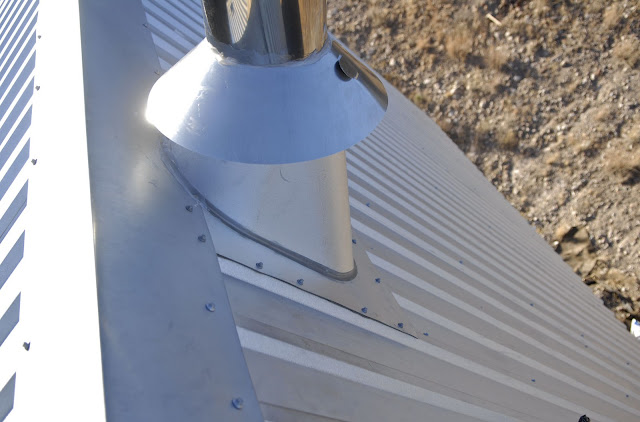Has anyone here installed their flue straight up through a cathedral ceiling with a metal roof? Roofing is 26 gauge 3 foot wide panels and the pitch is about 10/12. What piece do you need to seal the flue to the hole through the exterior metal and where do they sell them? This piece will have to sit on at least one of the ridges.
Thanks,
Jbird
Thanks,
Jbird


